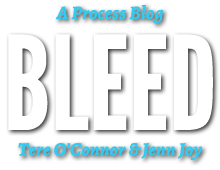Everything is the same except composition and as composition is different and always going to be different everything is not the same. —Gertrude Stein
I stole this epigraph from Rosmarie Waldrop who opens her meditations on Lyn Hejinian’s writing with a turn to Gertrude Stein. Already the room is crowded. Waldrop continues… she parses the disruptive syntax of Hejinian’s poetics to call attention to a more porous refusal of singular meaning, metaphor or analogy. All of these rhetorical tropes fall static against acoustic rhythm and repetition. Do you sense this?
Here I translate my thought
into jump-language, to double fate
But fate imposes its very interesting exercise: select
—Hejinian quoted in Waldrop
Reading these passages on the train, in transit, returns me to the studio and rehearsal where “jump-language” is quite literally something else and multiple things all at once. The condensation of techniques, states, flights—arabesque and fingers as gnarled tree; architecture rendered in three distinct spatial orientations; his relevé and her hip-shaking velocity; horizontal trajectories interrupted by oblique leaps and broken angles; her long arms extended with fingers writing in air and their hyper-articulate walk—reveals the power of choreography to do composition (and meaning) differently. Following Hejinian and Waldrop and Stein, composition proposes not only an obscure tautology but rather enacts an intrinsically relational, citational and temporal relay that resists closure even as it works within limits.
The compositions within poem and Secret Mary refuse any singular viewpoint, conjuring instead a series of vanishing points and unstable horizons, enabling momentary dependencies and fierce individuation. The works trace a series of erotic edges through disorienting encounter, shifts in urgency and withdrawal, the impossibility of ever seeing everything happening in front of us.
This is incredibly difficult work, intellectually, aesthetically, physically. It demands everything from the dancers. Silas and Michael stand on opposing edges of the space with arms extended, shaking their hands even as their heads turn away, then they run toward each other. Michael lifts Silas. Silas slides down to lift Michael. A slow refrain: they touch, exchange weight, carry, lift, drop, shift roles. Always slowly, always changing the orientation with each encounter: one climbs to stand on the other’s shoulders and the other is held upside down.
And so, Tere, you may ask why again I have defaulted to literary allusions to write about my encounter with your work. Of course, it is always difficult to unhinge one’s habits and obsessions. Yet more than that I want to try on the reverse view. What if I not only rely on the choreographic impulse within these writings—the ways that Stein takes us to an edge and runs us back to the beginning, or Hejinian evokes jumping, editing, a translation of mobile experience through paratactic virtuosity—but how the generatively illegible labor of dance materially and physically interrogates these ideas.
As witnesses to poem and Secret Mary we risk capture, affectively and emotionally. It is never only about reading, but learning how to read and understanding that everything is not the same. —Jenn Joy
